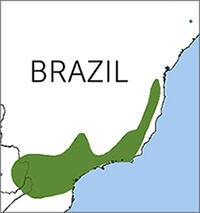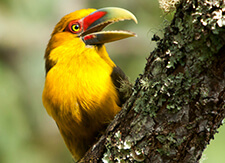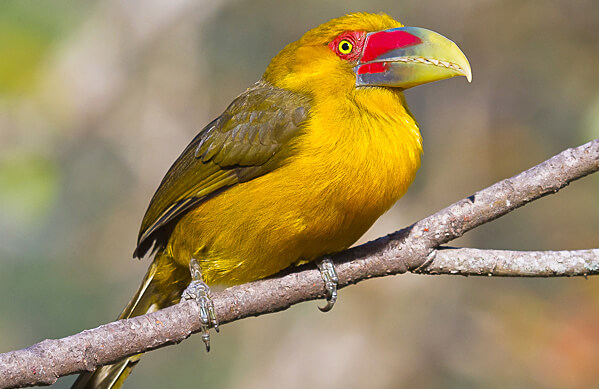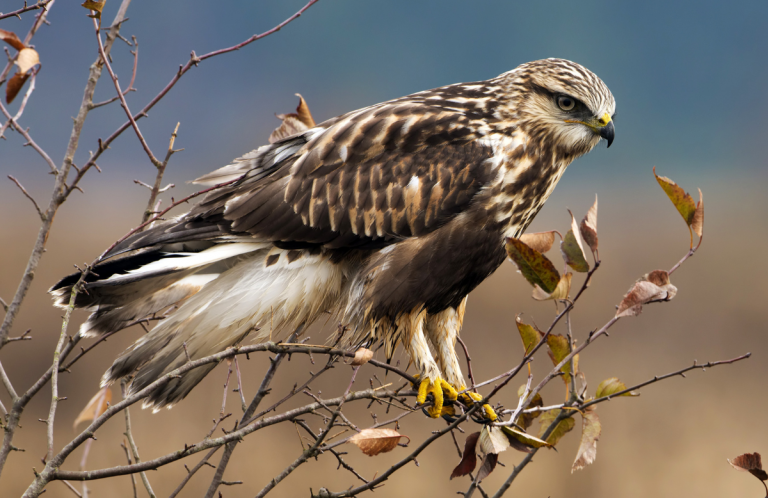 The Saffron Toucanet is known in Portuguese as "Araçari-banana," or Banana Toucanet. This colorful bird can be found in Brazil's Mata do Passarinho (also known as Stresemann's Bristlefront Reserve), where ABC and Fundação Biodiversitas, supported by PetroBras, have protected 1,468 acres of humid Atlantic Forest. Globally threatened species such as the Stresemann's Bristlefront and Banded Cotinga also occur here.
The Saffron Toucanet is known in Portuguese as "Araçari-banana," or Banana Toucanet. This colorful bird can be found in Brazil's Mata do Passarinho (also known as Stresemann's Bristlefront Reserve), where ABC and Fundação Biodiversitas, supported by PetroBras, have protected 1,468 acres of humid Atlantic Forest. Globally threatened species such as the Stresemann's Bristlefront and Banded Cotinga also occur here.
Sign up for ABC's eNews to learn how you can help protect birds
This bird's beauty is often its undoing, as it is captured illegally for the cage-bird trade. Other threats include habitat loss—the Atlantic Forest is one of the world's most threatened biomes—and hunting.
 The Saffron Toucanet tends to remain relatively inconspicuous as it forages through the tree canopy in pairs or small family groups. It has a variety of vocalizations ranging from loud notes to rattle-like sounds and softer purrs.
The Saffron Toucanet tends to remain relatively inconspicuous as it forages through the tree canopy in pairs or small family groups. It has a variety of vocalizations ranging from loud notes to rattle-like sounds and softer purrs.
Like other species in the toucan family, the Saffron Toucanet mainly eats fruit, but it will also feed on bird eggs and small animals (including smaller birds and their nestlings). The birds usually nest in abandoned woodpecker holes or other tree cavities; both the male and female share the incubation and chick-rearing duties.
Donate to support ABC's conservation mission!



















































